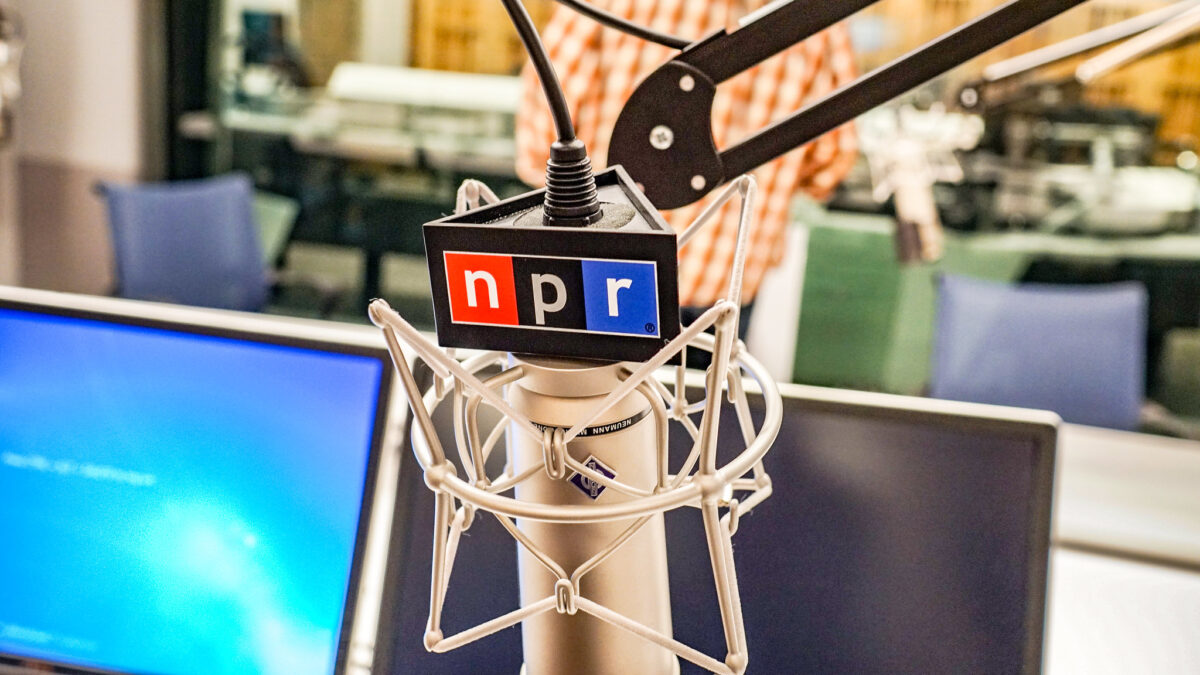
Last week, CNBC hosted the third GOP presidential debate. Many, such as Chris Cillizza of the Washington Post, declared Florida Sen. Marco Rubio and Texas Sen. Ted Cruz the big winners of the debate, in no small part due to their combined assault on “liberal bias” in “mainstream media.”
The losers? Among others, Jeb Bush for his lackluster performance, and CNBC for exemplifying the alleged anticonservative media bias with their embarrassingly poor moderation of the debate.
Rhetorically, denouncing media bias is a strong tactic for Republicans. As FiveThirtyEight’s Harry Enten explained, “Ted Cruz going after the media is a smart move in a Republican primary. According to a 2015 Newseum Institute First Amendment Center poll, only 19 percent of Republicans believe the media tries to report the news without bias. Democrats, at 36 percent, were far more likely to think that the news media tried to report without bias.”
So Rubio and Cruz were reflecting a deep conviction of most Republican constituencies, and the audience confirmed this with the biggest applauses of the night. But does this conviction reflect reality?
The short answer is yes, but, as I will show, that’s misleading. Moreover, contra Robert Tracinski, such a posture is not “awesome” but self-marginalizing, because it fails to see that the actual variety of bias in mainstream media, despite its many flaws, as a reflection of a flourishing, free press.
Look at the Data
On the one hand, certainly there are some major news outlets known for left-leaning journalism, such as CNN or The New York Times. There is, of course, truth to the claim that some mainstream media has such a “liberal bias.”
On the other hand, the data tells a more complicated story. This summer, Rick Kissell reported the Nielsen cable news ratings in Variety as follows:
TOP CABLE NEWS NETWORKS IN PRIMETIME
(Live plus same-day)
Adults 25-54
Fox News (301,000, up 14% from last year)
CNN (195,000, up 25%)
MSNBC (130,000, down 18%)
Total Viewers
Fox News (1,603,000, up 1% from last year)
CNN (560,000, up 22%)
MSNBC (512,000, down 10%)
TOP CABLE NEWS NETWORKS IN TOTAL-DAY
(Live plus same-day)
Adults 25-54
Fox News (186,000, down 2% from last year)
CNN (138,000, up 31%)
MSNBC (85,000, down 17%)
Total Viewers
Fox News (974,000, up 4% from last year)
CNN (431,000, up 26%)
MSNBC (318,000, down 5%
Notice what network is at the top, in some cases with more than double the viewers of the closest competitor? Not CNN but Fox News, which I daresay wouldn’t be caught dead being accused of “liberal bias.” Can the top-performing news network not be considered “mainstream”?
It would be fair to counter that cable news is not the only source on television, and not even the most-watched. Fox has no evening news like ABC, NBC, CBS, and PBS. The fact that, according to a recent study by the American Press Institute, “Democrats are more trusting of news from the three broadcast networks and the newswires, while Republicans are more trusting of news from cable” suggests the slant there tends to favor the Left.
However, people divide their news consumption today between mediums. That same study notes, “The 24-hour cable channels … are the source most often cited for four of the topics probed: politics, international news, business and the economy, and social issues.” So when it comes to political issues, the most common source, 24-hour cable news, is fairly evenly divided: Fox News generally has a Nielsen rating about equal to CNN’s and MSNBC’s combined.
Turning to print, the data tells the same story. Which New York-based newspaper has the highest circulation in the United States? Not The New York Times. As of March 2013 (the most recent figures I could find), the Times was No. 2 with a circulation of 1.8 million (1.1 million digital). The No. 1 paper, by a half million more, was the Wall Street Journal, which is more typically thought of as editorially right-leaning, with 2.3 million (roughly 900,000 digital). Are we to believe that the newspaper with the highest circulation in the country cannot be considered “mainstream”?
At least since the advent of Fox News and the ascendency of online publications, according to one study, news consumption has become increasingly personalized. We could also add to that the rise of politically-driven talk radio, which is dominated by conservative shows. Notably, however, the same study reported that social media and online outlets also correlated with increased exposure to material from less-preferred news outlets.
Nevertheless, the point still stands: people are consuming, or at least intending to consume, more of only those media channels that cater to their own political and other ideological preferences.
If a person reads only Conservative Publication X, it is easy to list the many other publications out there that, by contrast, have a left-wing slant. The perception then becomes that all those other outlets must be the mainstream and one’s own favored publication, radio show, or news channel is some sort of minority, underground, or counter-cultural venue. I would not be surprised if this same perception is mirrored on the Left to some degree, even though it isn’t as big of a talking point for Democratic politicians and pundits.
A Varied Mainstream Is Good for Freedom
This trend is especially unfortunate among conservative publications that cast themselves as something other than “mainstream” and sometimes even as something other than “the media.” Perhaps this is just semantics, but the latter claim is obviously false (any publication is media).
The former claim, however, is self-marginalizing. To presume that all “mainstream” media is by definition progressive makes becoming part of the mainstream impossible for conservative outlets.
Yet shouldn’t this be precisely the goal? It seems to have been the goal for Fox News, at least, and by the numbers they seem to have achieved it with flying colors. Indeed, the data also suggests there may be room in the mainstream market for one or more conservative alternatives to Fox News, just as CNN and MSNBC seem to be splitting progressive viewership.
This all makes me think of Dutch theologian and statesman Abraham Kuyper. Not only does his concept of sphere sovereignty entail that every domain of life, including journalism, ought to be independent of others and actively occupied by conservative Christians (preferably Calvinists), but he lived it.
Kuyper edited two newspapers in his lifetime, founding one and writing regular editorials in both. In fact, many of his works, including his three-volume work on social theology, “Common Grace,” were first written and published as a series of newspaper articles. Kuyper primarily promoted his ideas via mass journalism throughout the Netherlands. As James D. Bratt wrote in his biography, “Abraham Kuyper: Modern Calvinist, Christian Democrat,”
Kuyper was literally a schoolmaster for twenty years at the Free University and figuratively one for his half-century as a journalist, conducting a night school for the common people in the columns of his newspapers.… [M]ass journalism belongs on the Victorian shelf of innovations alongside the compendia of knowledge, outlines of history, digests of world-classic literature, and five-foot rows of books — all marks of the era’s passion to disseminate knowledge so as to ‘uplift’ the many.
Personally, I don’t find Fox News (or any other major networks, for that matter) all that uplifting, but if Fox’s numbers don’t make them “mainstream” then I don’t know who qualifies.
Stop with the Persecution Complex
The point is simple: An underdog mentality may have popular appeal among one’s base, but it is unbecoming and possibly even disingenuous to imply that all mainstream media is turned against conservatives. The mainstream is demonstrably broad enough to include many biases, and I doubt such a posture will be a winning strategy beyond primary season.
Certainly, as I’ve said, that mainstream does include left-wing bias. Indeed, while Cruz may have been exaggerating, I did think the CNN Democratic debate was much more fairly and sympathetically moderated. However, it is worth pointing out that even there Anderson Cooper’s opening question to Hillary Clinton was literally, “Will you say anything to get elected?” That’s not exactly equivalent to “Which of you is more handsome and why?”
John Adams, Samuel Adams, and James Bowdoin wrote in the Constitution of the Commonwealth of Massachusetts (Art. XVI), “The liberty of the press is essential to the security of freedom in a state.” Using Kuyper’s logic, since the press is not the proper domain of the state, a free press reflects a society where the state does not hinder freedom of expression.
The variety of biases that can be found even in the mainstream media serves as evidence of this freedom in the United States today. Instead of decrying those biases in the mainstream that we don’t like as if they were they only ones, those of us whose first political concern is freedom ought to be glad that a variety of viewpoints are in fact reflected there, as annoying as it may be when the viewpoint of any particular outlet contradicts one’s own.









